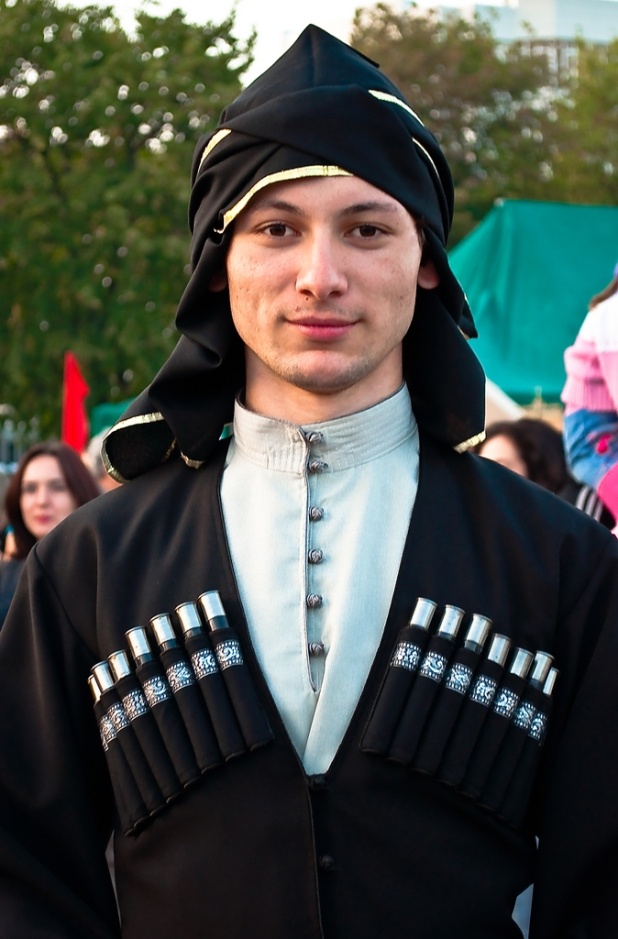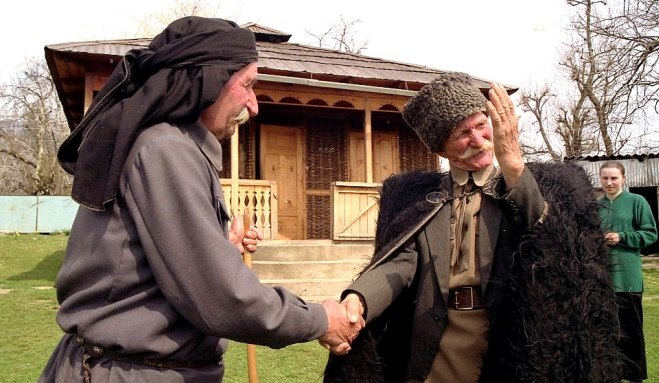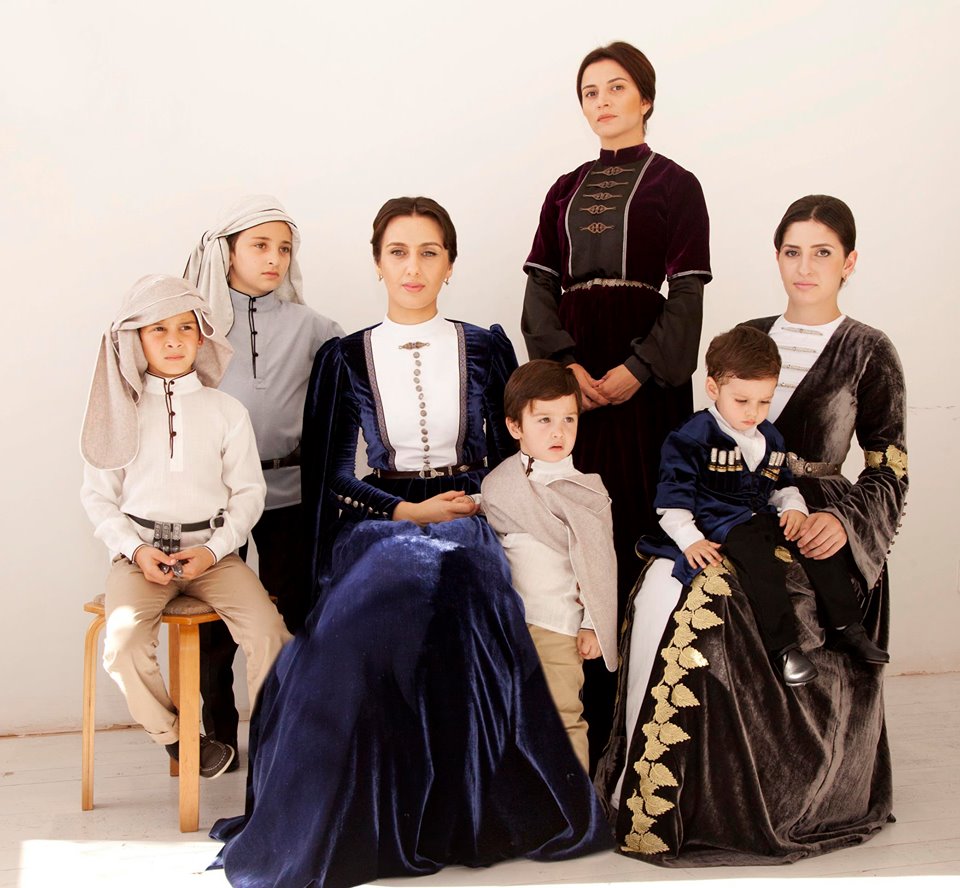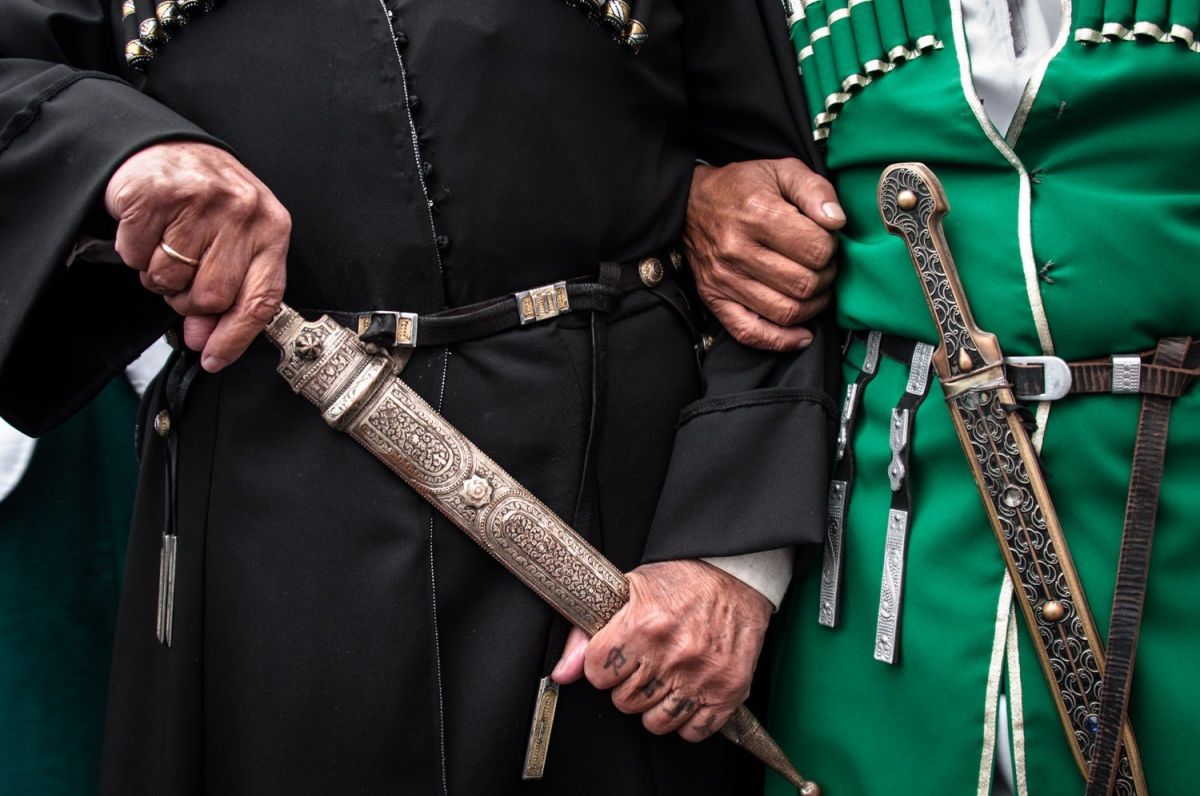



Abkhaz traditional Clothing
Clothing is an important element of the material culture of the Abkhaz people. It corresponded to the occupation of a person and was divided into everyday, festive and ritual clothes. Circassian coat is the most ancient and widespread kind of a national clothing for men. Trousers and a shirt with a tightly fastened collar were worn under the Circassian coat. The footwear included postoly made of rawhide and morocco home-made shoes worn when going out. Calves of the legs were covered with nogovitsy and knees were covered with knee-pads. Men wore a hat which had a special form – bashlyk.
Felt cloak (auapa) – a coat made of shaggy felt – was a mandatory attribute of an Abkhaz horseman. Elevated shoulders of the shaggy felt impart majestic bearing to the body of the horseman.
Women’s wear consisted of several main parts: a dress, a long or a short caftan, a shirt, two underskirts, pants and a hat or a headscarf. All dresses were tightened in the waist with a belt which served as a decorations and often represented a real artwork. Short caftan was sewn of a homespun cloth or velvet. It outlined breast and was bell-shaped lower the waist.
Alabasha – a crook made of a hard wood with tag and and naturally branched hook – was a special element of the traditional folk culture. Alabasha was used as a simple weapon, a support during a walk and a “tribune” for speakers: when an old man would stick his crook into the ground it meant he was ready to deliver a speech.
Footwear
In XIX - XX centuries a leather shoes on a soft or hard sole was very popular in everyday life of Abkhaz villages. Dressing and sewing of raw-hide footwear was the duty of men, and dressing and sewing of morocco footwear was the duty of women.
Among the Abkhaz peasants were also very popular “postols”. It was the home footwear, and also it was popular among shepherds and hunters. Postols as women's shoes from the second half of the XIX century were not as popular as the morocco and handicraft shoes.
Festive shoes for men and women were shoes from morocco. In 1920 - 1930-s a leather shoes with hard soles were widely used in the Abkhaz villages. The privilege of the wealthy sections of the population was morocco boots for men and for women too. Leggings - a specific element of men dress - worn over tight pants, tightly covering calves.
Along with postols, morocco shoes and boots women wore shoes with wooden soles. At the beginning of XX century women's home footwear was crocheted shoes. Already in the middle of XX century, traditional footwear had totally disappeared from everyday life and was replaced by handicraft shoes and factory-made shoes.
Head–dresses
Hats were the most conservative part of the Abkhazian’s wear. Materials for their making were skins of animals, felt and cloth. All types of traditional head-dresses had the invariable peaked shape, which was typical for the Abkhaz and the Adygei. Traditional and indigenous is the bashlyk - the head-dress with a hood and long ends, decorated with braid, thin strips of leather or galloons. In 1920 there were oval felt hats with small fields and braided hats made of straw and fistular grass.
The main type of head-dress of Abkhaz women was the large three-cornered shawl. Another kind till the beginning of XX century was a scarf, which they fell on the head or fastened on the back of the head. Also Abkhaz women wore homespun shawls of various forms of silk, wool or cotton. Already in the 1920's, the girls wore hats-berets. Nowadays only among the older generation still exist various kinds of scarves and shawls.
Decoration
Decoration of Abkhazian’s wear was due to centuries-old traditions of people. Decorations were in a single ensemble with the peculiarities of the material, cut and color spectrum of costume. Abkhazians preferred removable ornaments of silver, bronze, gold, bone, horn and wood. One of the main decorations of women’s costumes was different forms of buckles of silver or bronze. Among the wealthy people were very popular women's belts of different kinds.












